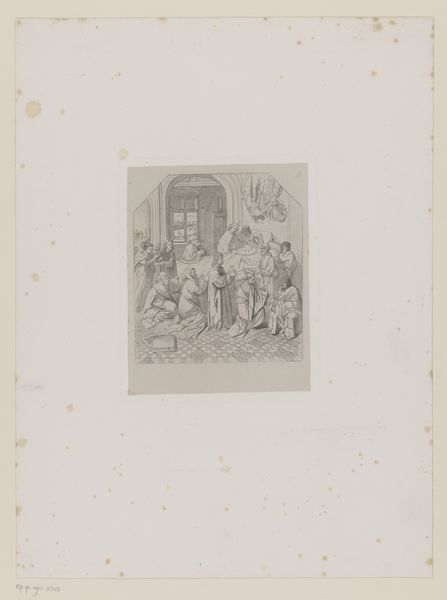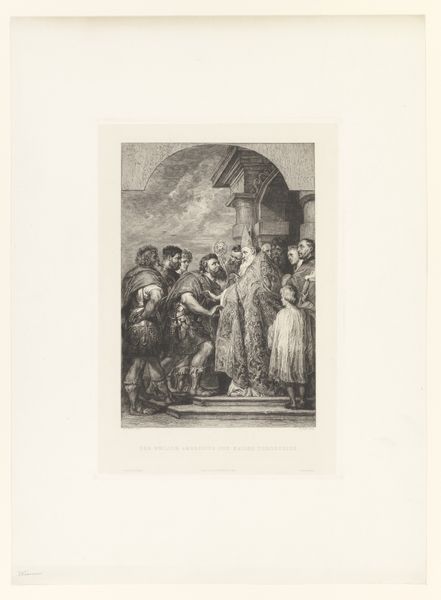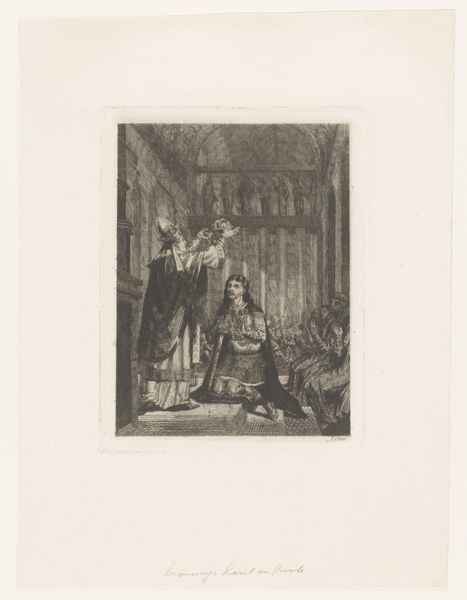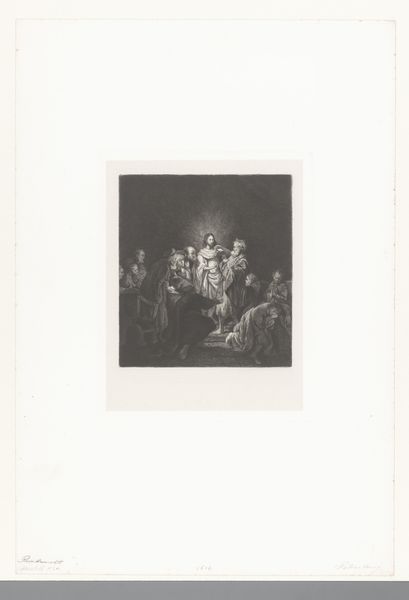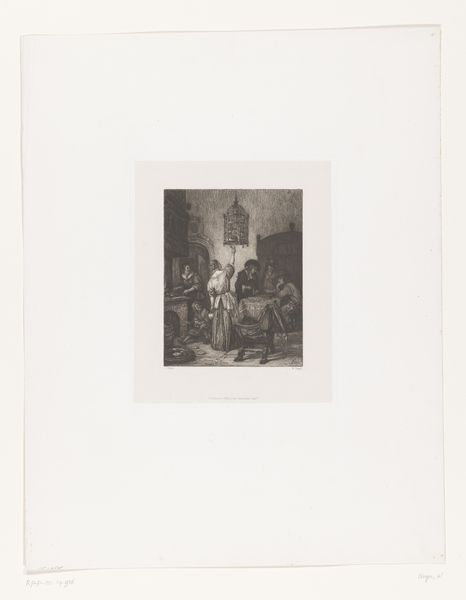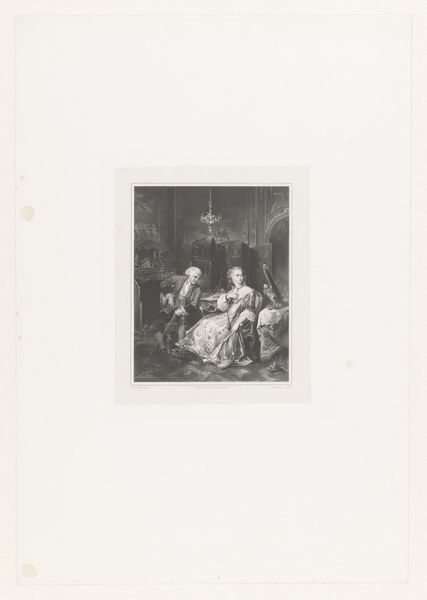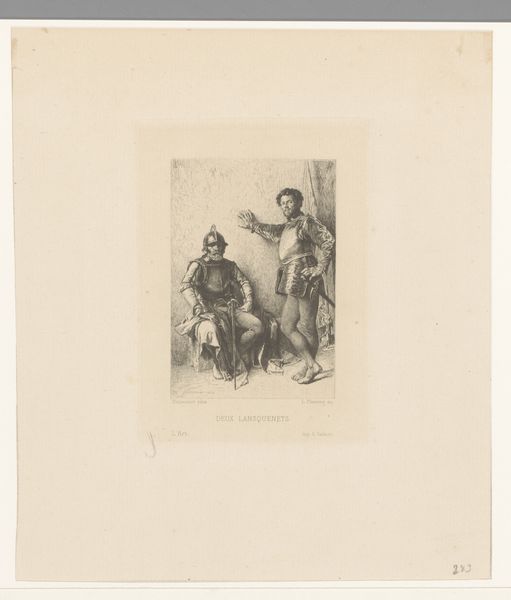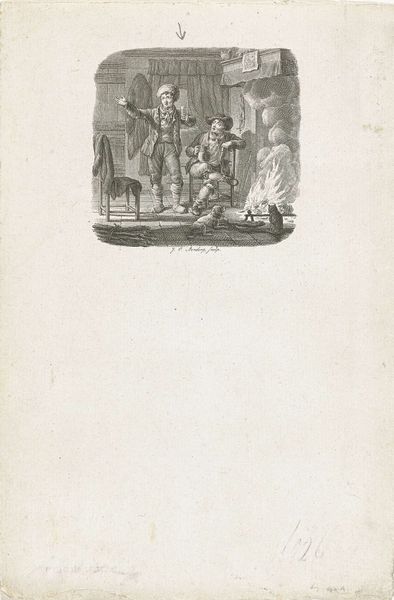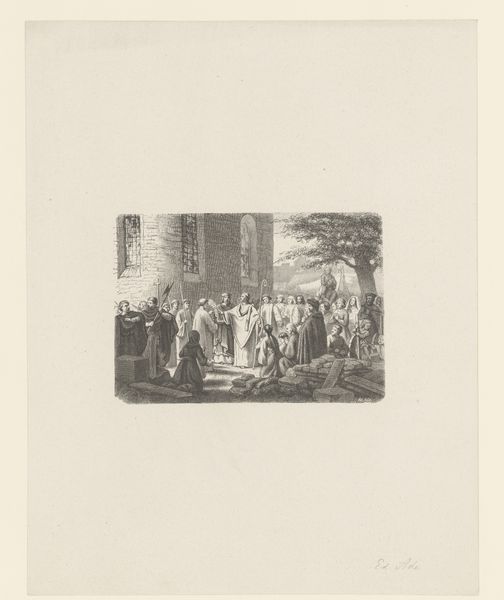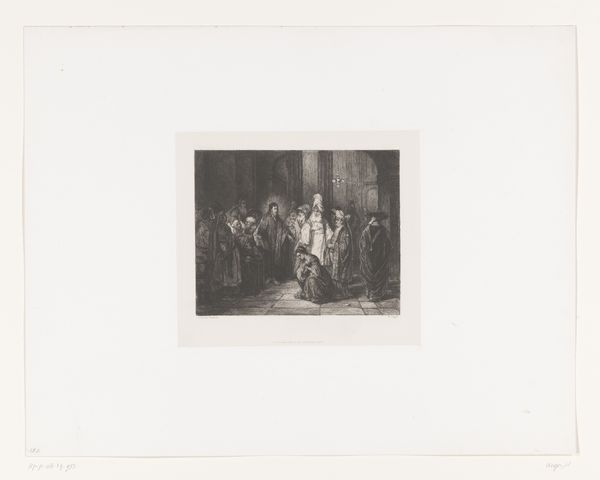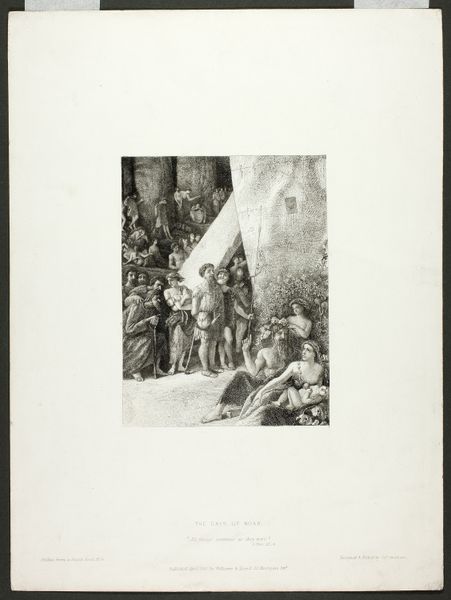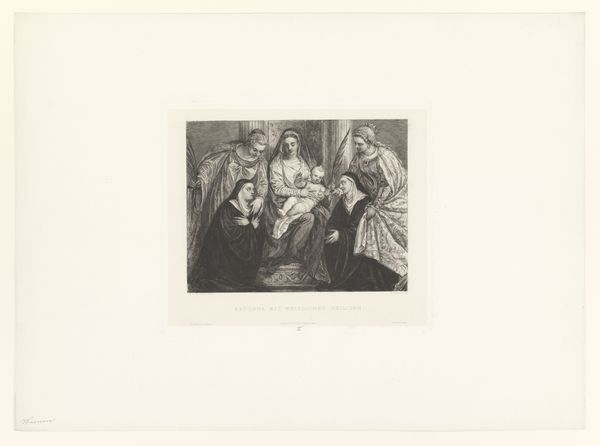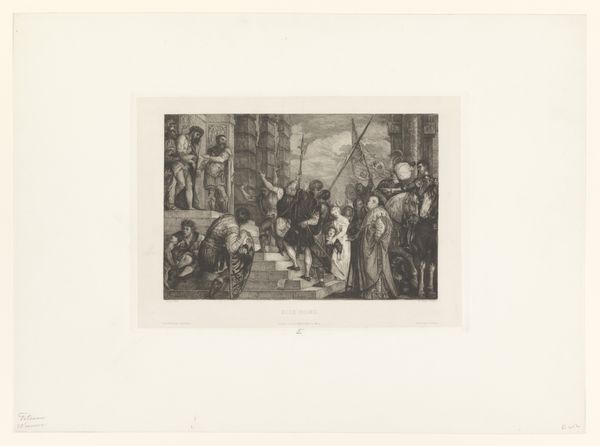
Dimensions: height 250 mm, width 166 mm
Copyright: Rijks Museum: Open Domain
Curator: This is Charles Rochussen's "Geharnaste mannen en monnik," or "Armored Men and Monk," created between 1847 and 1865. It’s currently held here at the Rijksmuseum. Editor: The immediate impression is somber, stark. The grayness emphasizes the rigidity and formality of the figures, it gives it a very melancholic presence. Curator: Rochussen skillfully employed pen and pencil to achieve this affect. We see this through his process. He used line work in these drawings, playing with light and shadow to create the image of weight on armor and cloth, the main textures present in the scene. The labor involved in meticulously rendering the details of the armor points to its social and economic significance as a marker of status and military power. Editor: Agreed. Focusing on the composition, the grouping of figures creates a clear visual hierarchy. The seated figure dominates, while those standing act almost as structural supports framing the center. It's classic history painting composition. The material reality becomes form as posture creates hierarchy of the subject’s relation to others. Curator: And that choice emphasizes the dynamic within these genre scenes and historical paintings—it portrays the contrast between the elite and the monastic orders that shaped 19th-century Dutch identity. The creation and distribution of these pencil and pen drawings in that moment facilitated a kind of national consciousness. Editor: Precisely, but within the confines of a Romantic structure! The starkness and detail speak to the broader play with the visible/invisible within Romanticism's preoccupation with representing past grandeur through intimate encounters with carefully articulated settings and persons. It emphasizes themes of nostalgia for pre-industrial modes, even as they adopt industrial means to make the drawing. Curator: I'm struck by how the production itself mirrors a shift towards wider cultural availability. The materiality emphasizes that moment. It wasn’t simply a piece for the elite but intended for reproduction and broader viewing, indicating that this interest in "history" went further into different markets of Dutch culture. Editor: Interesting; indeed the details push a specific historical imagining rooted in precise aesthetic strategies. This highlights something essential regarding not only Rochussen's technique but the function and place of Romanticism and formalism inside society itself.
Comments
No comments
Be the first to comment and join the conversation on the ultimate creative platform.
